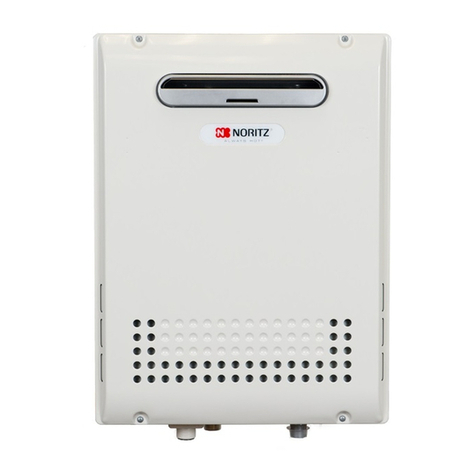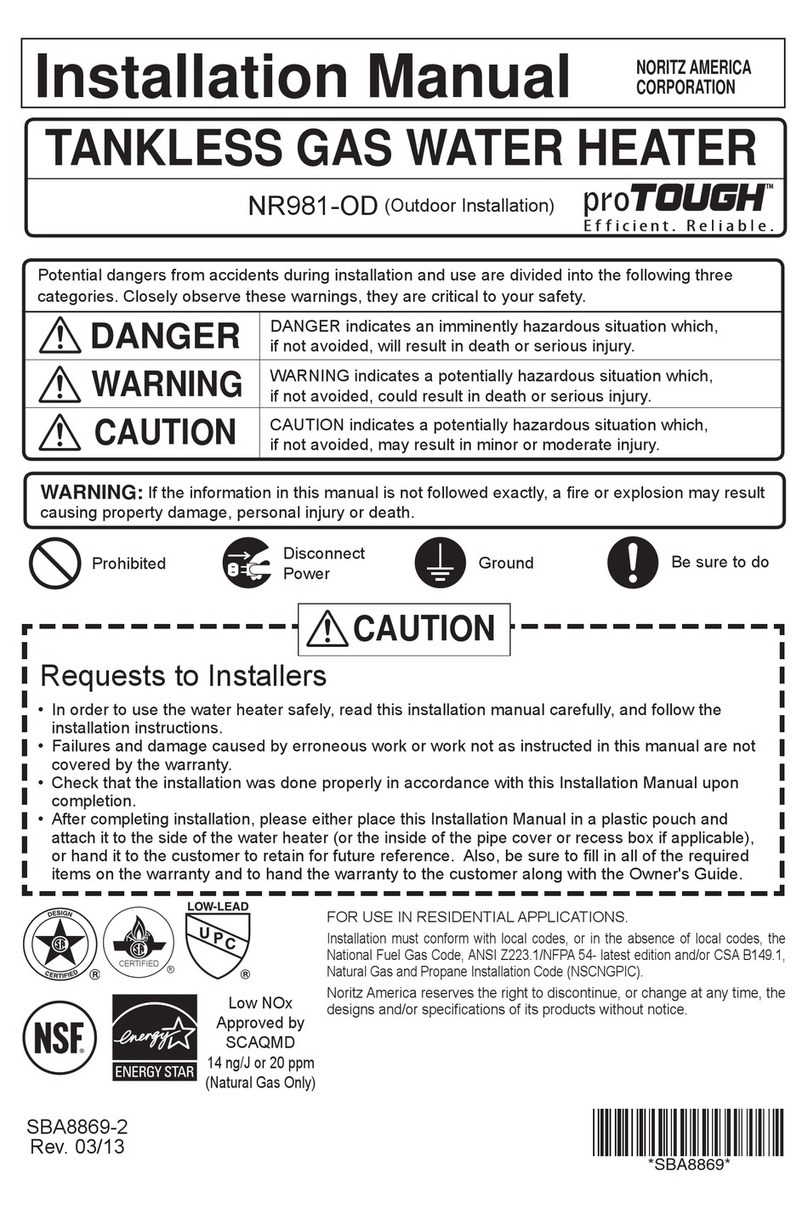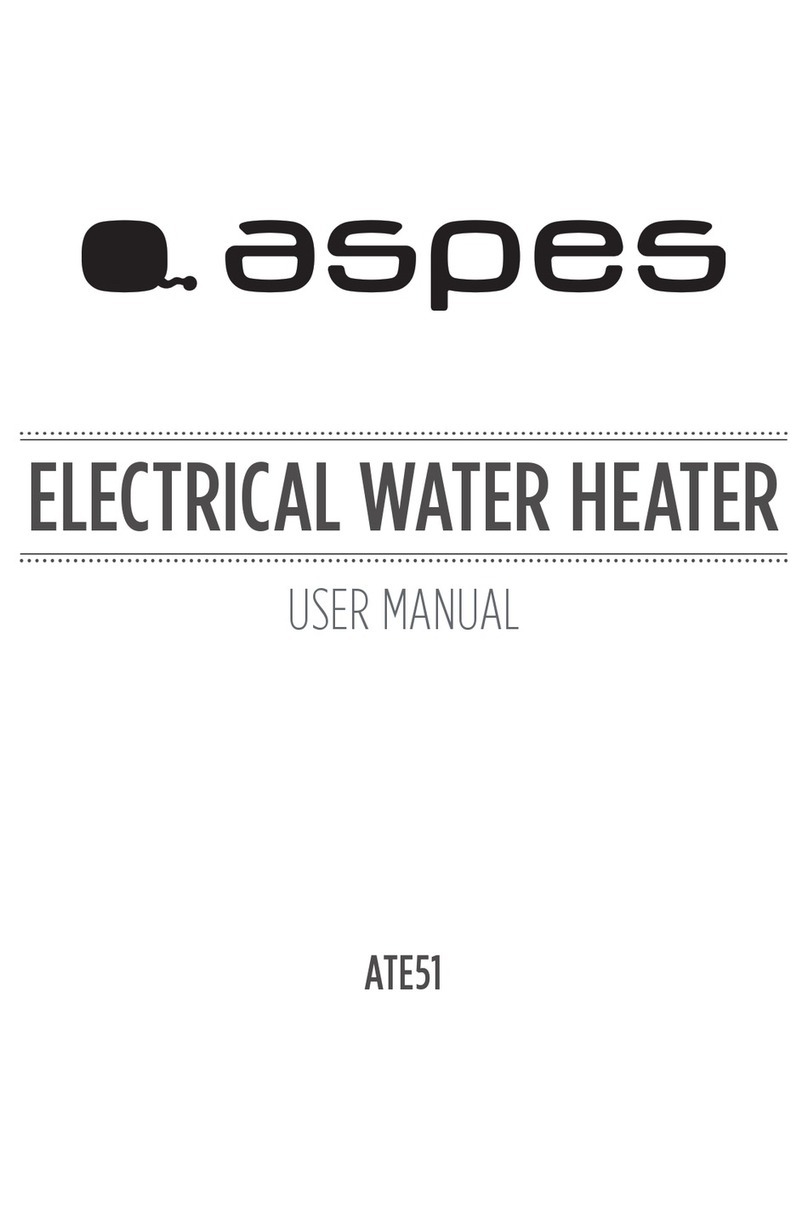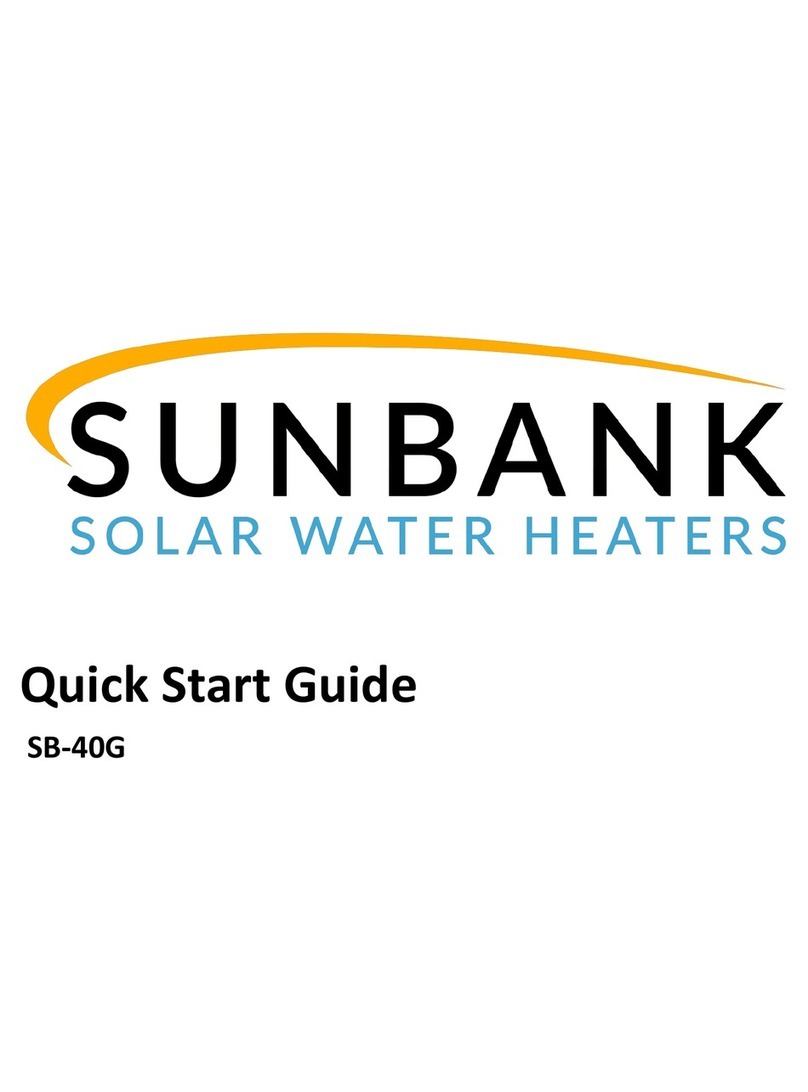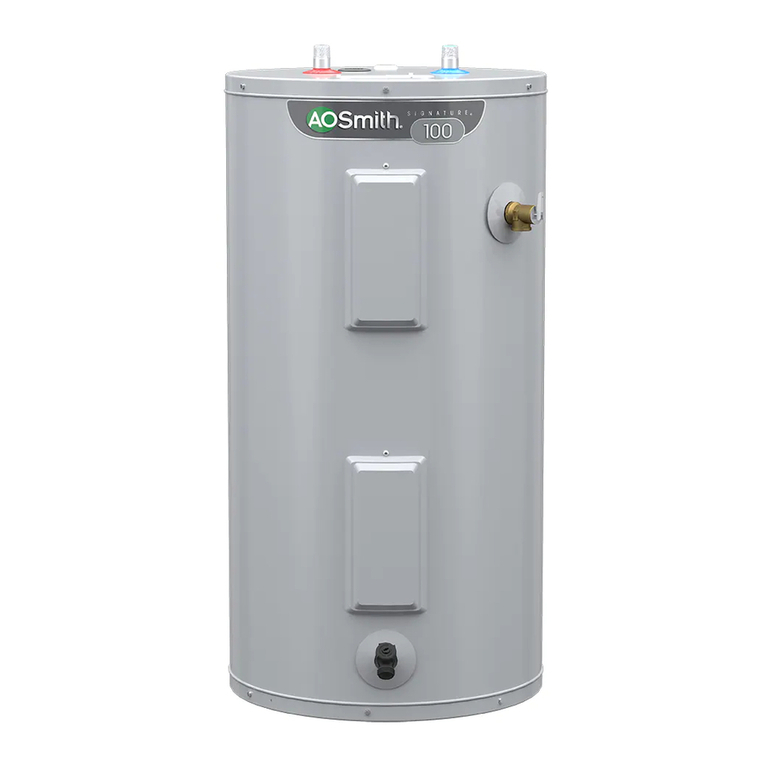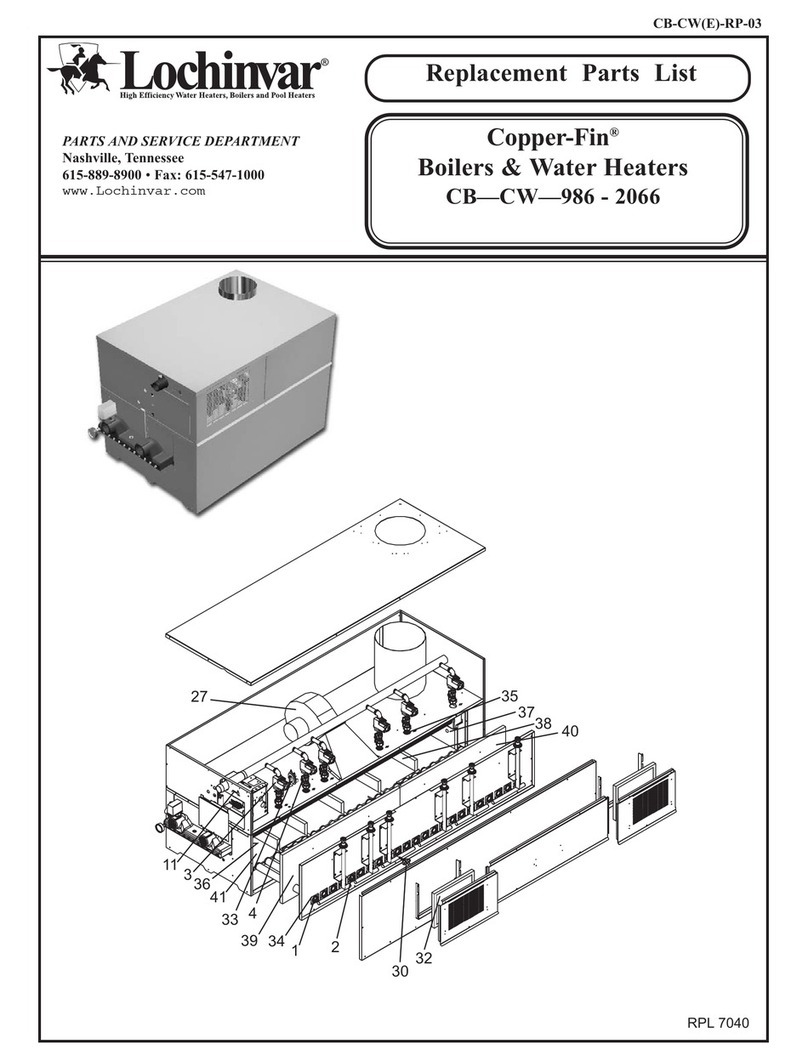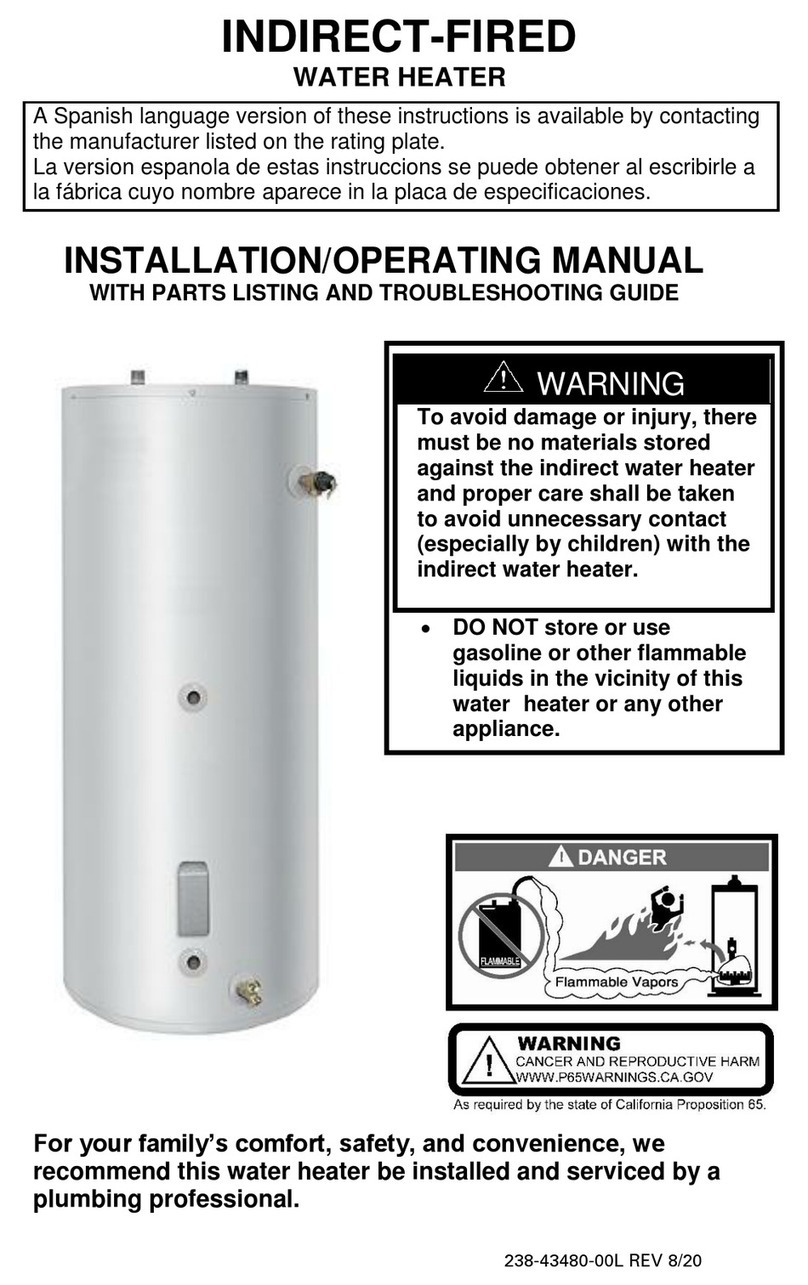proTough NR111-DV User manual

Potential dangers from accidents during installation and use are divided into the following three
categories. Closely observe these warnings, they are critical to your safety.
Prohibited Disconnect
Power Ground Be sure to do
WARNING: If the information in this manual is not followed exactly, a fire or explosion may result
causing property damage, personal injury or death.
NORITZ AMERICA
CORPORATION
Installation Manual
TANKLESS GAS WATER HEATER
NR111-DV (Indoor Installation)
DANGER indicates an imminently hazardous situation which,
if not avoided, will result in death or serious injury.
WARNING indicates a potentially hazardous situation which,
if not avoided, could result in death or serious injury.
CAUTION indicates a potentially hazardous situation which,
if not avoided, may result in minor or moderate injury.
DANGER
WARNING
CAUTION
SBA8376-2
Rev. 03/13
Requests to Installers
• In order to use the water heater safely, read this installation manual carefully, and follow the
installation instructions.
•Failures and damage caused by erroneous work or work not as instructed in this manual are not
covered by the warranty.
• Check that the installation was done properly in accordance with this Installation Manual upon
completion.
•
After completing installation, please either place this Installation Manual in a plastic pouch and
attach it to the side of the water heater (or the inside of the pipe cover or recess box if applicable),
or hand it to the customer to retain for future reference. Also, be sure to fill in all of the required
items on the warranty and to hand the warranty to the customer along with the Owner's Guide.
CAUTION
FOR USE IN RESIDENTIALAPPLICATIONS.
I
nstallation must conform with local codes, or in the absence of local codes,
the National Fuel Gas Code, ANSI Z223.1/NFPA 54- latest edition and/or CSA
B149.1, Natural Gas and Propane Installation Code (NSCNGPIC).
Noritz America reserves the right to discontinue, or change at any
time, the designs and/or specifications of its products without notice.
CERTIFIED
R
*SBA8376*
Complies with
jurisdictions having
40 ng/J or 55 ppm
NOx regulations
(Natural Gas Only)

2
1.
Included Accessories
The following accessories are included with the unit.
Check for any missing items before starting installation.
Q’tyShapePart
Anchoring Screw 1
each
Part Shape Q’ty
5
1
Remote Controller
(See p. 20) Remote Controller
Cord (10ft)
1
2.
Optional Accessories
The accessories listed below are not
included with the units, but may be necessary
for installation.
Q’tyShapePartPart Shape Q’ty
Flue Terminal
VT4-TL 1
Remote Controller
Cord (26 ft)
1
Flue Terminal
VT4-TS 1
Quick Connect
Cord 1
1
1
Isolation Valves
(includes pressure
relief valve)
Pipe Cover
(PC-3S)
Owner's Guide, Warranty,
Installation Manual
(this document)

3
G
Quick Connect
Cord
Remote Controller Cord Gas Supply Piping
Cold Water Supply
Hot Water
Remote Controller
Terminal Block
Cord
Connector Cord
Connector
3.
Quick Connect Multi System Installation
• The Quick Connect Multi System allows the installation of two units together utilizing only the Quick
Connect Cord.
Typical Plumbing
The Quick Connect Cord is 6 ft. long. Install the units 2-19" apart from each other to ensure the
cord will be able to reach between the units. (See Typical Plumbing diagram).
(If the distance between the two units is too great, not only will the cord not be able to reach,
but the water temperature may also become unstable because of the difference in pipe length
between the two units).
* When connecting two units, use only a
single remote controller.
Note: Connect the remote
controller to only one
of the units.
System Diagram
•Insulate the hot water piping to prevent heat loss. Insulate and apply heating materials to the cold
water supply piping to prevent heat loss and freezing of pipes when exposed to excessively cold
temperatures.
Distance at center: 20.3-37.3".
Union
Hot Water
Shutoff
Valve
Cold Water
Distance on sides
2-19".
Make this distance as short as possible.
* The hot water temperature will
become unstable as the pipe
length increases.
Union
Quick Connect
Cord
Pressure
Relief
Valve Shutoff
Valve
Union
Gas Valve
Shutoff Valve
Leave enough clearance around the plumbing
to apply insulation. It will be necessary to add
bends to the piping to ensure that this
clearance is available.
Size the piping to allow for the maximum
flow rates of the units.

4
4. Before Installation
Checkup
• Check the fixing brackets and vent pipe yearly for damage or wear. Replace if necessary.
DANGER
Do Not Use Equipment for Purposes Other Than Those Specified
•Do not use for other than increasing the temperature of the water supply, as unexpected accidents
may occur as a result.
Check Water Supply Quality
•If the water supply is in excess of 12 grains per gallon (200 mg/L) of hardness, acidic or otherwise
impure, treat the water with approved methods in order to ensure full warranty coverage.
WARNING
CAUTION
Check the Gas
•Check that the rating plate indicates the
correct type of gas.
•Check that the gas supply line is sized for
250,000 Btuh for this unit.
Check the Power
•The power supply required is 120VAC, at 60Hz.
May result in fire or electric shock.
Use Extreme Caution if Using With a Solar Pre-Heater
• Using this unit with a solar pre-heater can lead to unpredictable output temperatures and
possibly scalding. If absolutely necessary, use mixing valves to ensure output temperatures do
not get to scalding levels. Do not use a solar pre-heater with the quick-connect multi-system.
Precautions on Vent Pipe Replacement
•The vent system will almost certainly need to be replaced when this appliance is being installed.
Use vent pipe that is listed to UL 1738 for Category III appliances for the exhaust venting. Category
III listed vent pipe is suggested for the air supply pipe also, but other materials may be acceptable.
Consult local codes.
* If Category III listed vent pipe is already installed, check for punctures, cracks or blockages and
consult with the vent pipe manufacturer before reusing.
Use Approved Vent Materials
•Use only vent materials that are listed to UL 1738 for Category III appliances for the exhaust venting
of this appliance.
Improper venting may result in fires, property damage or exposure to Carbon Monoxide.
Snow Precaution
•If this product will be installed in an area where snow is known to accumulate, protect the vent
termination from blockage by snow drifts or damage from snow falling off of roofs.

5
5. Choosing Installation Site
* Locate the appliance in an area where leakage from the unit or connections will not result in damage
to the area adjacent to the appliance or to the lower floors of the structure. When such locations
cannot be avoided, it is recommended that a suitable drain pan, adequately drained, be installed
under the appliance. The pan must not restrict combustion air flow.
•Locate the vent terminal so that there are no obstacles around the termination and so that ex-
haust can't accumulate. Do not enclose the termination with corrugated metal or other materials.
•Avoid places where fires are common, such as those where gasoline,
benzene and adhesives are handled, or places in which corrosive gases
(ammonia, chlorine, sulfur, ethylene compounds, acids) are present.
Using the incorrect voltage may result in fire or cracking.
•Avoid installation in places where dust or debris will accumulate.
Dust may block the air-supply opening, causing the performance of the
device fan to drop and incomplete combustion to occur as a result.
•Avoid installation in places where special chemical agents
(e.g., hair spray or spray detergent) are used.
Ignition failures and malfunction may occur as a result.
• Carbon Monoxide Poisoning Hazard. Do not install this water heater in a
mobile home, recreational vehicle or on a boat.
•The water heater is designed for indoor installation only. Never install it
outdoors or in a bathroom, it may be damaged or a fire may be caused.
•Consult with the customer concerning the location of installation.
• Install the water heater in an area that allows for the proper clearances
to combustible and noncombustible construction. Consult the rating
plate on the appliance for proper clearances.
•Do not install the water heater in a place where it may be threatened by
falling objects, such as under shelves.
• The water heater must be installed in a place where supply and exhaust
pipes can be installed as directed.
•Do not install the water heater where the exhaust will blow on outer
walls or material not resistant to heat. Also consider the surrounding
trees and animals.
The heat and moisture from the water heater may cause discoloration of
walls and resinous materials, or corrosion of aluminum materials.
Prohibited
DANGER
WARNING
CAUTION
Prohibited

6
• Avoid installation above gas ranges or stoves.
• Avoid installation between the kitchen fan and stove. If oily
fumes or a large amount of steam are present in the installation
location, take measures to prevent the fumes and steam from
entering in the equipment.
• Install in a location where the exhaust gas flow will not be
affected by fans or range hoods.
• Take care that noise and exhaust gas will not affect neighbors.
Avoid installation on common walls as the unit will make some
operational noises while it is running.
•Before installing, make sure that the exhaust flue termination will
have the proper clearances according to the National Fuel Gas
Code (ANSI Z223.1).
State of California: The water heater must be braced, anchored or strapped to avoid moving during an
earthquake. Contact local utilities for code requirements in your area or call: 1-866-766-7489 and request
instructions.
Be sure to do
Prohibited
Prohibited
CAUTION
The Commonwealth of Massachusetts: The water heater can be used for hot water only and not in a
combination of domestic and space heating.
For Venting Manufacturers Requirements, see websites or phone numbers listed below:
Noritz N-Vent www.noritz.com

7
6. Installation Clearances
Before installing, check for the following:
Install in accordance with relevant building and mechanical codes, as well as any local, state or
national regulations, or in the absence of local and state codes, to the National Fuel Gas Code ANSI
Z223.1/NFPA 54 – latest edition. In Canada, see NSCNGPIC for detailed requirements.
WARNING
Item
Distance from combustibles
•Maintain the following clearances
from both combustible and
non-combustible materials.
Check Illustration
•If possible, leave 8" or more on either
side of the unit to facilitate inspection.
•If possible, leave 24" or more in front of
the unit to facilitate maintenance
and service if necessary.
•If possible, leave 3" or more above and
below the vent pipe to facilitate inspec-
tion and repair if necessary
Securing of space for
repair/inspection
24" or
more
8" or
more
8" or
more
Distance from
the side
12"
or
more
2" or
more
3"
or more
3"
or more
4" or
more

8
7. Installation
Securing to the wall
Clearance Requirements from Vent Terminations to Building Openings
*All clearance requirements are in accordance with ANSI Z21.10.3 and the National Fuel Gas Code,
ANSI Z223.1 and in Canada, in accordance with NSCNGPIC.
DescriptionRef
A=
Clearance above grade, veranda, porch,
deck, or balcony
B=
Clearance to window or door that may
be opened
C=
Clearance to permanently closed window
D=
Vertical clearance to ventilated soffit
located above the terminal within a
horizontal distance of 2 feet (61 cm)
from the center line of the terminal *
E=
Clearance to unventilated soffit *
F=
Clearance to outside corner *
G=
Clearance to inside corner *
H=
Clearance to each side of center line
extended above meter/regulator assembly
3 ft (91 cm) within a height
15 ft (4.5 m) above the
meter/regulator assembly
I=
Clearance to service regulator vent outlet 3 ft (91 cm)
J=
Clearance to nonmechanical air supply
inlet to building or the combustion air inlet
to any other appliance
K=
Clearance to a mechanical air supply inlet 6 ft (1.83 m)
L=
Clearance above paved sidewalk or paved
driveway located on public property
Clearance under veranda, porch, deck,
or balcony
7 ft (2.13 m)†
M=
1
In accordance with the current CSA B149.1 Natural Gas and Propane Installation Code
2
In accordance with the current ANSI Z223.1 / NFPA 54 National Fuel Gas Code
† A vent shall not terminate directly above a sidewalk or paved driveway that is located between two single
family dwellings and serves both dwellings.
‡ Permitted only if veranda, porch, deck, or balcony is fully open on a minimum of two sides beneath the floor.
* Clearance in accordance with local installation codes and the requirements of the gas supplier.
Clearance to opposite wall is 24 inches (60 cm).
12 in (30 cm)‡
*
12 in (30 cm)
36 in (91 cm)
*
*
*
*
*
*
*
*
3 ft (91 cm) above if within
10 ft (3 m) horizontally
*
12 in (30 cm)
12 in (30 cm)
12 in (30 cm)
36 in (91 cm)
US Direct Vent
Installations
2
Canadian Direct Vent
Installations
1
Vent Terminal
D
E
B
B
F
B
A
G
H
I
CB
M
K
J
B
B
L
Air Supply Inlet
Area Where Terminal
is Not Permitted
A

9
IllustrationCheck
4. Drill holes for the remaining four screws.
5. Hang the unit again by the first screw, and then
insert and tighten the remaining four screws.
6. Take waterproofing measures so that water does
not enter the building from screws mounting the
device.
•Make sure the unit is installed securely so that it will
not fall or move due to vibrations or earthquakes.
1. Drill a single screw hole, making sure to hit a stud.
2. Insert and tighten the screw and hang the unit by
the upper wall mounting bracket.
3. Determine the positions for the remaining four screws
(two for the top bracket and two for the bottom), and
remove the unit.
• The weight of the device will be applied to the wall. If the strength of the wall is not suffi-
cient, reinforcement must be done to prevent the transfer of vibration.
•Do not drop or apply unnecessary force to the device when installing. Internal parts may
be damaged and may become highly dangerous.
• Install the unit on a vertical wall and ensure that it is level.
Locating Screw Holes
Mounting
Structure
•When installing with bare hands, take caution to
not inflict injury.
•Be careful not to hit electrical wiring, gas, or water
piping while drilling holes.
Item
CAUTION
Be sure to do
Mounting Bracket
(upper)
Anchoring Screw
Location of Screw Hole
Locating Screw Holes
8. Vent Pipe Installation(Indoor Installation Only)
Vent Terminal Installation
•Follow the installation instructions included with the vent terminal. It is suggested that the appliance be
vented horizontally through a sidewall. If a vertical vent termination is required, it must follow the
requirements of this section (p.9-12).
HIGH ELEVATION
DISCONNECT
•If this water heater is being installed at an elevation of
2,000 ft. (610m) or higher, disconnect the connector
labeled "High Elevation Disconnect" as illustrated on
the right. This connector is located inside the unit.
•Disconnect power to the water heater before discon-
necting this connector. Failure to perform this step will
result in a "73" code displayed on the remote controller
and a cease in operation. If this occurs, disconnect,
then reconnect power to the water heater to reset the
system.
Installations at Elevations
Above 2,000 ft.

10
Model
Wall thickness (in.)
VT4-TL-5 3.5" to 5.1"
VT4-TL-8 5.1" to 8.3"
VT4-TL-14 8.3" to 14.6"
VT4-TL-27 14.6" to 27.2"
Main unit
Straight pipe
Use a listed Category III vent adapter
to connect the flue collar to the vent
system. Use Category III vent pipe
for the entire length of the exhaust
pipe.
Flue Termination VT4-TL, VT4-TS Installation Precautions.
Note the following vent terminal installation requirements
•Do not install the vent terminal indoors • Install the vent terminal with a downward slope
upward
slope
downward
slope
•Install with the proper length protruding through the wall •Avoid storing hazardous
objects near the terminal
Gasoline
Gas
Proper installation. The
red line can be seen,but
the red rectangle cannot
be seen from the outside.
Vent terminal
Vent terminal
not far
enough too far
Snow
drift Tree
•Avoid installing the terminal where obstacles will block it •Clearance from vent terminal.
If multiple units are installed,
terminals must be separated
by a minimum of either 12"
horizontally or 60" vertically.
Vent terminal
12" or more
Elbows
Elbow
Vent terminal
sloping down
Intake pipe
Exhaust
pipe
Vent system installation example
Vent terminal models
•Use only the following models of Noritz
vent terminals with this unit.
•VT4-TL
•VT4-TS
(for long vent runs)
(to be installed directly
on top of the appliance)
Vent terminal
•
Vent terminal size variations are listed in the table below.
Choose the model according to the wall thickness required.
•Do not cover the vent terminal with any type of
protective screen or enclosure. Blocked terminals
can cause abnormal combustion resulting in
undesired performance from the water heater.
Vent terminal
60" or
more

11
•Support the vent pipe with hangers at intervals
as required by the vent pipe manufacturer ’s in-
stallation instructions.
• Install the vent terminal so that it is easily
accesible for maintenance both from the indoors
and the outdoors.
•If the vent terminal will be installed higher than
the water heater,make the vertical section di-
rectly above the water heater as short as
possible,and slope down to the terminal. Do not
have another vertical section after the horizontal
section begins.
• Make the vertical pipe as short as possible.
Venting Precautions
•Use 4" diameter Category III vent pipe.
•Maximum vent length
• Exceeding the maximum vent length is danger-
ous and may result in bad combustion.
•If possible,don ’t install the vent pipe through any
enclosed areas.If necessary,consult the pipe
manufacturer ’s instructions for clearances.
•Install the vent terminal so that all exhaust is di-
rected to and all intake air is taken from outdoors.
•In the Commonwealth of Massachusetts a car-
bon monoxide detector is required for all side
wall horizontally vented gas fuel equipment.
Please refer to Technical Bulletin TB 010606 for
full installation instructions.
•Do not store hazardous or flammable sub-
stances near the vent terminal and check that it
is not blocked in any way.
•Slope the intake and exhaust pipes downwards
1/4" for every 12" towards the termination.
•Use only UL listed Category III venting products.
•Connect the vent pipe firmly so that it will prevent
exhaust gases from leaking.
•Steam or condensed water may come out from
the vent termination. Select the location for the
termination so as to prevent injury or property
damage.
•If this product will be installed in an area where
snow is known to accumulate,protect the vent
termination from blockage by snow drifts or dam-
age from snow falling off of roofs.
Number of 90
degree elbows
4
3
2
1
Maximum
Vent Length*
39'
45'
51'
57'
•Do not common vent or connect more than
one appliance to this venting system.
•Terminate at least 12"above grade or snow line.
• Terminate at least 7'above a public walkway.
• Use a condensation drain if necessary.
Appliance Adapters
When using a vent system other than N-Vent,
an appliance adapter will be required to properly
connect the vent to this appliance. Consult the
manufacturer's instructions for the proper appli-
ance adapter.
Manufacturer and Enclosed Unenclosed
Product Hor. Vert. Hor. Vert.
Noritz N-Vent 4" 1" 1"
Clearances vary by manufacturer, refer to the UL
approved clearances when using materials other
than N-Vent.
• Follow the vent pipe manufacturer's installation
instructions.
• Maintain the same vent pipe diameter all the
way to the end.
• Maintain the following clearances for the
exhaust pipe to combustibles:
10" (sides)
15"(top)
6"(bottom)
* Not including the termination

12
Vertical Vent Termination
• Terminate at least 6' from the combus-
tion air intake of any appliance, and 3'
from any
other building opening, gas utility meter,
service regulator etc.
• Enclose exterior vent systems below
the roof line to limit condensation and
protect against mechanical failure.
• When the vent penetrates a floor or
ceiling and is not
running in a fire rated shaft, a firestop
and support is required.
• When the vent termination is located
not less than 8' from a vertical wall or
similar obstruction, terminate above the
roof at least 2', but not more than 6', in
accordance with the National Fuel Gas
Code ANSI Z223.1/NFPA 54.
• Provide vertical support every 12' or as
required by the vent pipe
manufacturer's instructions.
•Ashort horizontal section is recom-
mended to prevent debris from falling
into the water heater.
• Install a condensation drain in the
horizontal section of the venting.
• Slope the horizontal section 1/4"
for every 12" toward the drain tee.
Appliance
Adapter*
Firestop
Firestop/
Support
Roof
Flashing
RainCap
Exhaust
Intake Air
Hanger
Strap
Elbow
1-2'
6'
2'
Min.
* Adapter not required when
using Noritz N-Vent.
**1' minimum recommended,
but not required.Avoid installing
elbow directly on flue.
**1' Min. - 3' Max.
Roof
Jack
Storm
Collar
Condensation
Drain (Install
According to
Local Codes)
(Combustible material)
Intake pipe
External wall,
combustible material
• Inspection openings are suggested for the vent intake and exhaust
pipes if they are installed in an enclosure. These openings should
be near the entrance and exit of the vent into the enclosure.
• These openings should be 18" x 18".
Suggested inspection openings (18" x 18")
When the intake/exhaust pipes pass through an enclosed space:
Ceiling
Sloping down toward vent terminal
Exhaust pipe

13
Gas Meter
Select a gas meter capable of supplying the entire
btuh demand of all gas appliances in the building.
Gas Connection
•Do not use piping with a diameter smaller than
the inlet diameter of the water heater.
•Gas flex lines are not recommended unless they
are rated for 250,000 btuh.
•Install a gas shutoff valve on the supply line.
•Use only approved gas piping materials.
Follow the instructions from the gas supplier.
Gas Pressure
Size the gas line according to total btuh demand
of the building and length from the meter or
regulator so that the following supply pressures
are available even at maximum demand:
Natural Gas Supply Pressure
Min. 5" WC
Max. 10.5" WC
LP Gas Supply Pressure
Min. 10.5" WC
Max. 14" WC
9. Gas Piping
The appliance and its individual shutoff valve must be disconnected from the gas supply piping system
during any pressure testing of that system at test pressures in excess of 1⁄2psig (3.5 kPa).
The Appliance must be isolated from the gas supply piping system by closing its individual manual shutoff
valve during any pressure testing of the gas supply piping system at test pressures equal to or less than 1⁄2
psig (3.5 kPa).
The appliance and its gas connections must be leak tested before placing the appliance in operation.
The inlet gas pressure must be within the range specified. This is for the purposes of input adjustment.
In order to choose the proper size for the gas line, consult local codes or the National Fuel Gas Code ANSI
Z223.1.
Natural Gas
Meter **See next page for the pipe capacity charts.
Noritz Tankless Gas Water Heater
(250,000 Btuh)
Clothes Dryer
(35,000 Btuh)
Barbecue
(50,000 Btuh)
Gas Range Stove
(65,000 Btuh)
10'
10'
10'
10'
5'
5'
5'
5'
Gas Fireplace
(25,000 Btuh)
Instructions
1. Size each outlet branch starting from the furthest
using the Btuh required and the length from the
meter.
2. Size each section of the main line using the
length to the furthest outlet and the Btuh
required by everything after that section.
Sample Gas Line
Sample Calculation
Outlet A: 45' (Use 50'), 50,000 Btuh requires 1/2"
Outlet B: 40', 65,000 Btuh requires 1/2"
Section 1: 45' (Use 50'), 115,000 Btuh requires 3/4"
Outlet C: 30', 35,000 Btuh requires 1/2"
Section 2: 45' (Use 50'), 150,000 Btuh requires 3/4"
Outlet D: 25' (Use 30'), 25,000 Btuh requires 1/2"
Section 3: 45' (Use 50'), 175,000 Btuh requires 1"
Outlet E: 25' (Use 30'), 250,000 Btuh requires 3/4"
Section 4: 45' (Use 50'), 425,000 Btuh requires 1-1/4"
Section 3 Section 2 Section 1
Outlet A
Outlet B
Outlet C
Outlet D
Outlet E
5' 5'
Section 4
Measuring Gas Pressure
In order to check the gas supply pressure to the unit, a
tap is provided on the gas inlet. Remove the hex head
philips screw from the tap, and connect a manometer
using a silicon tube.
In order to check the gas manifold pressure, a pair of
taps are provided on the gas valve inside the unit.
The pressure can be checked either by removing the hex
head philips screw and connecting a manometer with a
silicon tube, or by removing the 1/8" NPT screw with an
allen wrench and connecting the appropriate pressure
gauge.

14
Gas Line Sizing for a Noritz Tankless Gas Water Heater
Maximum Natur
Natur
al Gas Delivery Capacity in Cubic Feet per Hour (0.60 Specific Gravity, 0.5" WC Pressure Drop)
Contact the Gas Supplier for Btu/Cubic Ft.of the Supplied Gas. 1000 BTU/Cubic Ft. is a Typical Value
Maximum Liquefied P
Liquefied P
etroleum (Undiluted) Delivery Capacity in Thousands of Btuh (0.5" WC Pressure Drop)
Length in Feet
Length in Feet
Pipe
Size
Pipe
Size
1/2"
1/2"
3/4"
3/4"
1"
1"
1 1/4"
1 1/4"
1 1/2"
1 1/2"
2"
2"
2 1/2"
3"
3 1/2"
4"
10' 20' 30' 40' 50' 60' 70' 80' 90' 100' 125'
10' 20' 30' 40' 50' 60' 70' 80' 90' 100' 125' 150' 200'
174
363
684
1404
2103
4050
6455
11,412
16,709
23,277
119
249
470
965
1445
2784
4437
7843
11,484
15,998
96
200
377
775
1161
2235
3563
6299
9222
12,847
Adapted from UPC 1997
82
171
323
663
993
1913
3049
5391
7893
10,995
73
152
286
588
880
1696
2703
4778
6995
9745
66
138
259
532
798
1536
2449
4329
6338
8830
61
127
239
490
734
1413
2253
3983
5831
8123
56 53 50 44
118 111 104 93
222 208 197 174
456
683
1315
2096
3705
5425
7557
428
641
1234
1966
3476
5090
7091
404
605
1165
1857
3284
4808
6698
358
536
1033
1646
2910
4261
5936
275
567
1071
2205
3307
6221
189
393
732
1496
2299
4331
152
315
590
1212
1858
3465
129
267
504
1039
1559
2992
114
237
448
913
1417
2646
103
217
409
834
1275
2394
96
196
378
771
1181
2205
89
185
346
724
1086
2047
83
173
322
677
1023
1921
78
162
307
630
976
1811
69
146
275
567
866
1606
63
132
252
511
787
1496
55
112
213
440
675
1260
Maximum Capacity of Flex TracPipe in Cubic Feet per Hour of Natural Gas
(0.60 Specific Gravity, 0.5" WC Pressure Drop)
Length in Feet
Pipe
Size
3/4"
1"
1 1/4"
1 1/2"
2"
10' 20' 30' 40' 50' 60' 70' 80' 90' 100' 150' 200'
206
383
614
1261
2934
147
269
418
888
2078
121
218
334
723
1698
105
188
284
625
1472
94
168
251
559
1317
86
153
227
509
1203
80
141
209
471
1114
75
132
194
440
1042
71
125
181
415
983
67
118
171
393
933
55
94
137
320
762
48
82
116
277
661
R
Maximum Capacity of Flex TracPipe in Thousands of Btuh Liquefied Petroleum
( 0.5" WC Pressure Drop)
Length in Feet
Pipe
Size
3/4"
1"
1 1/4"
1 1/2"
2"
10' 20' 30' 40' 50' 60' 70' 80' 90' 100' 150' 200'
325
605
971
1993
4638
232
425
661
1404
3285
191
344
528
1143
2684
166
297
449
988
2327
149
265
397
884
2082
136
241
359
805
1902
126
222
330
745
1761
118
208
307
696
1647
112
197
286
656
1554
106
186
270
621
1475
87
143
217
506
1205
76
129
183
438
1045
R
** For reference only. Please consult gas pipe manufacturer for actual pipe capacities.
** For reference only. Please consult gas pipe manufacturer for actual pipe capacities.
Maximum Capacity for Gas Flex Connectors in Cubic Feet per Hour of Natural Gas (0.60 Specific Gravity, 0.5" WC Pressure Drop)
Length in Inches
Pipe
Size
1/2"
3/4"
1"
1 1/4"
12" 24" 36" 48" 60" 72"
180 150
290
581
1470
125
255
512
1200
106
215
442
1130
93
197
397
960
86
173
347
930
Length in Inches
Pipe
Size
1/2"
3/4"
1"
1 1/4"
12" 24" 36" 48" 60" 72"
288 240
465
930
2352
200
409
825
1920
169
344
708
1808
149
315
638
1536
137
278
556
1488
Maximum Capacity for Gas Flex Connectors inThousands of Btuh Liquefied Petroleum ( 0.5" WC Pressure Drop)
** For reference only. Please consult gas pipe manufacturer for actual pipe capacities.
TracPipe® is a registered trademark of Omega Flex.

15
10.
Water Piping
This appliance is suitable for potable water and space heating applications. Do not use this appliance if any part has
been underwater. Immediately call a qualified service technician to inspect the appliance and replace any part of the
control system and gas control which has been under water.
If the water heater is installed in a closed water supply system, such as one having a backflow preventer in the cold
water supply line, means shall be provided to control thermal expansion. Contact the water supplier or a local plumb-
ing inspector on how to control this situation.
A pressure relief valve must be installed near the hot water outlet that is rated in accordance with and complying with
either The Standard for Relief Valves and Automatic Shutoff Devices for Hot Water Supply Systems, ANSI Z21.22, or
The ANSI/ASME Boiler and Pressure Vessel Code, Section IV ( Heating Boilers ). This pressure relief valve must
be capable of an hourly Btu rated temperature steam discharge of 250,000 Btuh. Multiple valves may be used. The
pressure relief capacity must not exceed 150 psig. No valve shall be placed between the relief valve and the water
heater. The relief valve must be installed such that the discharge will be conducted to a suitable place for disposal
when relief occurs. No reducing coupling or other restriction may be installed in the discharge line. The discharge line
must be installed to allow complete drainage of both the valve and the line. If this unit is installed with a separate
storage vessel, the separate vessel must have its own temperature and pressure relief valve. This valve must also
comply with The Standard for Relief Valves and Automatic Gas Shutoff Devices for Hot Water Supply Systems, ANSI
Z21.22. (in the U.S. only). A temperature relief valve is not required, but if one is used, do not install the valve with the
probe directly in the flow of water. This may cause unwarranted discharge of the valve.
Piping and components connected to the water heater shall be suitable for use with potable water.
Toxic chemicals, such as those used for boiler treatment, shall not be introduced into the potable water.
A water heater used to supply potable water may not be connected to any heating system or components previously
used with a nonpotable water heating appliance.
When water is required in one part of the system at a higher temperature than in the rest of the system, means such
as a mixing valve shall be installed to temper the water to reduce the scald hazard.
Installation and service must be performed by a qualified plumber. In the
Commonwealth of Massachusetts, this product must be installed by a licensed
plumber or gas fitter in accordance with the Massachusetts Plumbing and Fuel
Gas Code 248 CMR Sections 2.00 and 5.00. Observe all applicable codes.
• Flush water through the pipe to clean out metal powder, sand and dirt before connecting it.
• Perform the following insulation measures for prevention of freezing.
•Take appropriate heat insulation measures (e.g., wrapping with heat
insulation materials, using electric heaters) according to the climate of
the region to prevent the pipe from freezing.
•Make sure that there are no water leaks from the cold and hot water
supply pipes, then insulate the pipes completely.
•Be sure to also completely insulate the water supply valve and the
cold and hot water connections on the water heater (refer to the figure
on the right).
•Do not cover the water drain plug with insulation so that water in the
pipe can be drained. (Refer to the figure in the right.)
•
Use a union coupling or flexible pipe for connecting the pipes to reduce the force applied to the piping.
• Do not use piping with a diameter smaller than the coupling.
• When feed water pressure is too high, insert a depressurizing valve, or take water hammer prevention measure.
• Avoid using joints as much as possible to keep the piping simple.
• Avoid piping in which an air holdup can occur.
• If installing the unit on a roof:
• About lower-level hot water supply
If the unit is installed on a roof to supply water to the levels below, make sure that the water pressure supplied to
the unit does not drop below 29 psi. It may be necessary to install a pump system to ensure that the water pressure
is maintained at this level.
Check the pressure before putting the unit into operation.
Failure to supply the proper pressure to the unit may result in noisy operation, shorter lifetime of the unit, and may
cause the unit to shut down frequently.
Completely insulate
the water inlet and
outlet fittings.
Insulate the water
supply valve completely.
Do not cover the water
drain plug with insulation
so that water in the pipe
can be drained.

16
Supply water piping
•
Do not use PVC, iron, or any piping which has been
treated with chromates, boiler seal or other chemicals.
•
Mount a check valve and a shut off valve (near the inlet).
•In order for the client to use the water heater
comfortably, 98.1 to 491 kPa (14 to 70 PSI) of
pressure is needed from the water supply.
Be sure to check the water pressure. If the water
pressure is low, the water heater cannot perform
to its full capability, and may become a source of
trouble for the client.
Drain piping
•Expansion water may drop from the pressure
relief valve and wet the floor.
If necessary, provide drain piping or use a drain
hose to remove the water.
Hot water piping
•Do not use lead, PVC, iron or any piping which
has been treated with chromates, boiler seal or
other chemicals.
•The longer the piping, the greater the heat loss.
Try to make the piping as short as possible.
•Use mixing valves with low water resistance. Use
shower heads with low pressure loss.
•If necessary, use a pump or other means to en-
sure that the supply water pressure to the inlet of
the heater does not fall below 29 PSI when the
maximum amount of water is being demanded.
Also install a pressure meter on the inlet. If this is
not done, local boiling will occur inside the water
heater causing abnormal sounds and decreasing
the durability of the heat exchanger.
Freeze Prevention
•Freezing is prevented within the device automatically unless the outside temperature without wind is
below -30°F (-35°C).
* When combustion air is supplied from the indoors, the room temperature must be greater than 32°F (0°C)
to prevent freezing and the room inside must not have negative pressure.
•If this model is installed in an area where the outside temperature can approach freezing conditions of
-30°F (-35°C) or below, then additional freeze protection measures must be used. For temporary
freeze protection measures, refer to the Owner's Guide.
• The freeze prevention heaters will not prevent the plumbing external to the unit from freezing.
Protect this plumbing with insulation, heat tape or electric heaters, solenoids, or pipe covers.
• In order for the freeze prevention heaters to operate, the water heater must have power at all times.

17
Water Treatment
Water Treatment System
City Water Supply
Pressure
Relief
Valve
Hot Water to Fixtures
Shutoff Valve
Drain
Cold to Water
Heater
Optional Sediment
Filter
Water Treatment Device
Shutoff Valve
NORITZ
NR111-DV
Type of Water
Hardness
Level Treatment
Device Flush
Frequency*
Type of Water
Hardness
Level Treatment
Device Flush
Frequency*
Soft
0-1 gpg
1-3 gpg
(0-17 mg/L)
None None None
None
None
None
Slightly Hard
(17-51 mg/L)
None None
Moderately
Hard
Hard
3-7 gpg
(51-120 mg/L)
H2Flow or
ScaleShield
H2Flow or
ScaleShield
Once a Year** Once a Year
Twice a Year
Once a Year**
7-10 gpg
(120-171 mg/L)
Very Hard
10-14 gpg
(171-239 mg/L)
H2Flow
H2Flow
H2Flow
H2Flow
H2Flow
H2Flow
Treatment
Required
Extremely
Hard
Soft
Slightly Hard
Moderately
Hard
Hard
Very Hard
Extremely
Hard
> 14 gpg
(> 239 mg/L)
0-1 gpg
1-3 gpg
(0-17 mg/L)
(17-51 mg/L)
3-7 gpg
(51-120 mg/L)
7-10 gpg
(120-171 mg/L)
10-14 gpg
(171-239 mg/L)
> 14 gpg
(> 239 mg/L)
Treatment
Required
Treatment
Required
Treatment
Required
* Install Noritz Isolation Valves to allow for flushing.
** Flushing is required if a water treatment device is not installed.
Suggested
Suggested
**
**
* Install Noritz Isolation Valves to allow for flushing.
** Flushing is required if a water treatment device is not installed.
Residential Use Treatment Guidelines Commercial Use Treatment Guidelines
If this water heater will be installed in an application where the supply water is hard, the water must be
treated with either the Noritz H2Flow or ScaleShield or a water softener. Refer to the below tables for
suggested treatment and maintenance measures to be taken based on the water hardness level.
Damage to the water heater as a result of water in excess of 12 gpg (200 mg/L) of hardness is not
covered by the Noritz America Limited Warranty.
Note: Water softeners may be regulated by the local water jurisdiction, consult with the manufacturer
for code, sizing, and installation
guidelines; the below diagram is for reference only. For more
information about H2Flow and ScaleShield, contact
Noritz America at 866-766-7489.

18
11. Plumbing Applications
Recirculation System
Combination Potable Water and Space Heating System
Cold Water Supply
Isolation
Kit(*4)
Gas Supply
Aquastat(*3)
Pump Control Signal(*2)
Relay for Pump
(if larger than 85 Watts)
Hot Water
Optional 8-10 Gallon
Storage Tank
(To alleviate cold water sandwich)
Globe
Valve
Pump(*1)
Expansion Tank
(Install according
to local code)
Fixtures
Hot Water Return
R
B
W
Pump
120VAC
105
Neutral
Ground
Live
S
Isolation
Kit(*1)
Gas Supply Backflow Preventer
(optional)
Check
Valve(*3)
Cold Water
Supply
Mixing Valve(*5)
Hot Water
Pump(*2)
Flow Switch(*4)
Fixtures
Air Handler
Notes:
Notes:
Use Honeywell Aquastat
(Model L6006A or L6006C)
Aquastat Wiring
Optional
Expansion Tank(*6)
NORITZ
Tankless Gas
Water Heater
NORITZ
Tankless Gas
Water Heater
1. Size the pump to provide a maximum of 2 GPM
through the system at 10 ft of head plus piping
losses.
Adjust the flow using a globe valve and verify the
flow rate with the maintenance monitors.
2. Pump Control Signal is the preferred method
to control the recirculation pump.
For pumps larger than 85W, a relay connection must
be used. If the Pump Control Signal is not used,
an Aquastat may be used to control the pump.
3. Use an Aquastat if the water heater is not control-
ling the pump.
Set the Aquastat to 10°F below the set output
temperature.
4. Noritz recommends the use of an Isolation Kit
with the installation.
These kits include an integrated shut-off and serv-
ice valve with unions and a pressure relief valve.
1. Noritz recommends the use of an Isolation Kit with
the installation.
These kits include an integrated shut-off and serv-
ice valve with unions and a pressure relief valve.
2. Size the pump to provide a maximum of 3 GPM
with a head pressure equal to the loss through the
water heater and Air Handler.
3
.
Check valve required if it is not included with the
pump.
4. Set the flow switch to deactivate the Air Handler
when the domestic hot water flow reaches 3 GPM.
Adjust as necessary to prevent cycling.
5. If the system requires water for space heating at
a higher temperature than for other uses, means
such as a mixing valve shall be provided to temper
the water for the other uses to help prevent scald
-ing.
6. Expansion tank required if a backflow preventer is
installed.
7.The water heater cannot be used for space heating
applications only.

19
Do not connect electrical power to the unit until all electrical wiring has been completed.
Consult a qualified electrician
for the electrical work.
12. Electrical Wiring
This appliance must be electrically grounded in accordance with local codes, or in the absence of local codes,
with the National Electrical Code, ANSI/NFPA 70. In Canada, the latest CSA C22.1 Electrical Code.
Caution: Label all wires prior to disconnection when servicing controls. Wiring errors can cause improper
and dangerous operation.
Verify proper operation after servicing.
Field wiring to be performed at time of appliance installation.
• The electrical supply required by the water heater is
120VAC at 60 Hz.
The power consumption may be up to 250W or higher if
using optional accessories.
Use an appropriate circuit.
•Do not disconnect the power supply when not in use. When
the power is off, the freeze prevention in the water heater
will not activate, resulting in possible freezing damage.
•Do not let the power cord contact the
gas piping.
Tie the redundant power cord out-
side the water heater. Putting the
redundant length of cord inside the
water heater may cause electrical
interference and faulty operation.
Disconnect Power
Electrical Shock Hazard
Do not turn power on until electrical wiring is finished. Disconnect power before servicing.
Failure to do so may result in death or serious injury from electrical shock.
WARNING
Electrostatic discharge can affect electronic components. Take precautions to prevent electrostatic
discharges from personnel or hand tools during the water heater installation and servicing to protect
product’s electronic control.
CAUTION
Ground
•To prevent electrical shock, provide a ground with resistance less than 100 . An electrician should
do this work.
Do not connect the ground to the city water or gas piping. Do not tie the ground to a telephone line.
Breaker Installation
•Mount a device which shuts off the electrical path automatically (leakage breaker) when electrical
leakage is detected.

20
• Applicable Model
Install the remote controller according to the instructions in the Installation Guide (p. 30).
* The water heater has been factory set to allow a maximum temperature setting of 120°F.
To access higher temperature settings through the remote controller, follow the below steps.
* When using the remote controller with a multi-system controller, the maximum temperature of the
water heater can be set up to 180°F without making the following settings.
• When changing the temperature, make sure to confirm with the customer that the temperature of
the hot water will be very high and that there is a risk of scalding.
• Water temperatures above 125°F can cause severe burns or death from scalding.
<When setting the maximum temperature to 125-140°F>
1. Turn the water heater off by pressing the ON/OFF button on the remote controller.
2. Press and hold the FLOW METER ALARM SET button until a sound is heard (2 sec.) and 120°F
appears on the display.
3. Set the upper limit of the hot-water supply temperature to 125°F, 130°F, 135°F or 140°F using the
UP and DOWN setting buttons.
4. To put the water heater back into operation, press the ON/OFF button on the remote controller.
To keep the water heater off, let the unit sit for 30 sec. to return to the original display.
<When setting the maximum temperature to 125-180°F>
1. Turn the water heater off by pressing the ON/OFF button on the remote
controller.
2. Disconnect electrical power to the water heater.
3. Remove the front cover of the water heater (4 screws).
4. Connect "WATER TEMPERATURE ADJUSTMENT CONNECTOR" tag
connector to "180°F" tag connector as shown on the right.
5. Replace the front cover of the water heater (4 screws).
6. Reconnect electrical power to the water heater, but do not turn it on.
7. Press and hold the FLOW METER ALARM SET button until a sound is
heard (2 sec.) and 120°F appears on the display.
8. Set the upper limit of the hot-water supply temperature to
125°F, 130°F, 135°F, 140°F, 145°F, 150°F, 160°F, 170°F or 180°F
using the UP and DOWN setting buttons.
9. To put the water heater back into operation, press the ON/OFF button on the remote controller.
To keep the water heater off, let the unit sit for 30 sec. to return to the original display.
•The NR111-DV can be programmed so that it will default to one of four temperatures if the remote control-
ler is removed (180, 140, 130, 120°F). To change the default temperature, connect the temperature
selection wire as shown in the above diagram. The default temperature is 120°F when the temperature
selection wire is not connected.
Remote Controller
Remote controller RC-7649M
NR111-DV
• When changing the temperature, make sure to confirm with the customer that the temperature of
the hot water will be very high and that there is a risk of scalding.
•
Hot water heater temperatures over 125°F can cause severe burns instantly or death from scalding.
WARNING
WATER TEMPERATURE
ADJUSTMENT CONNECTOR
WATER TEMPERATURE
ADJUSTMENT CONNECTOR
(the back :55 C) (the back : 60 C) (the back :83 C)
Table of contents
Other proTough Water Heater manuals
Popular Water Heater manuals by other brands
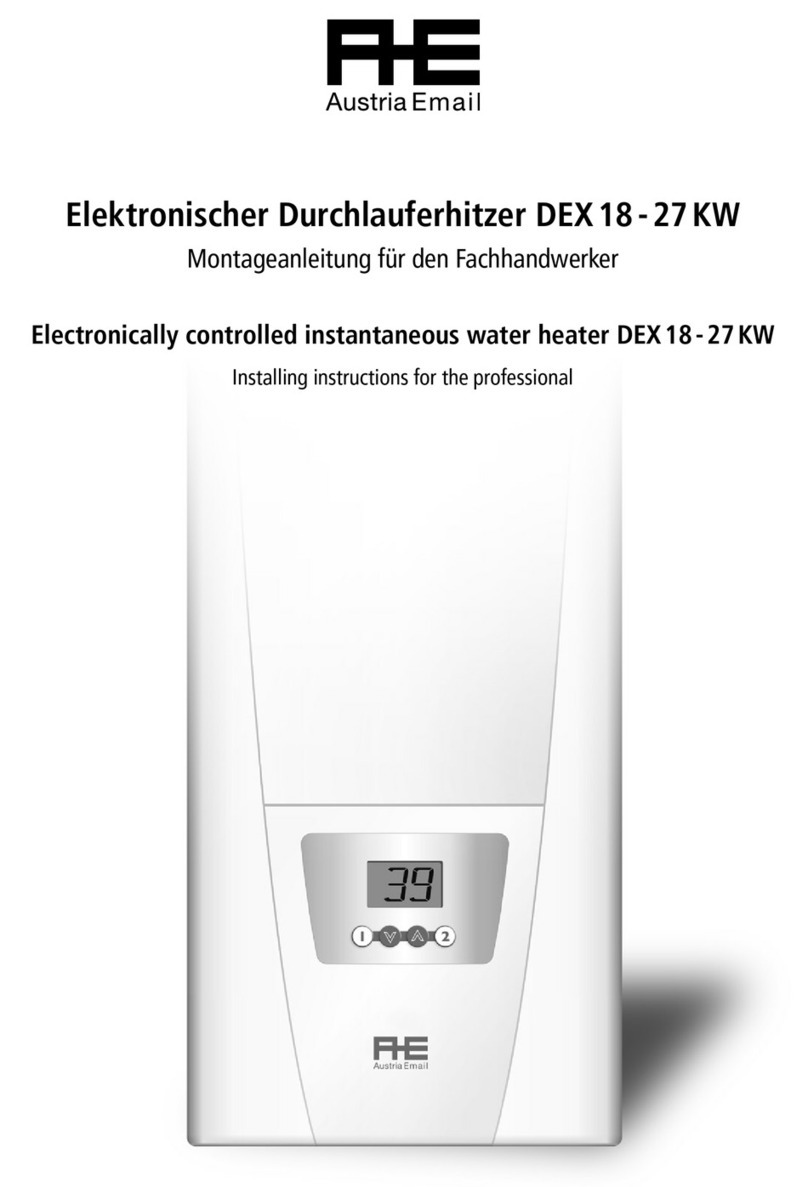
AE
AE DEX 18-27 Installing instructions for the professional
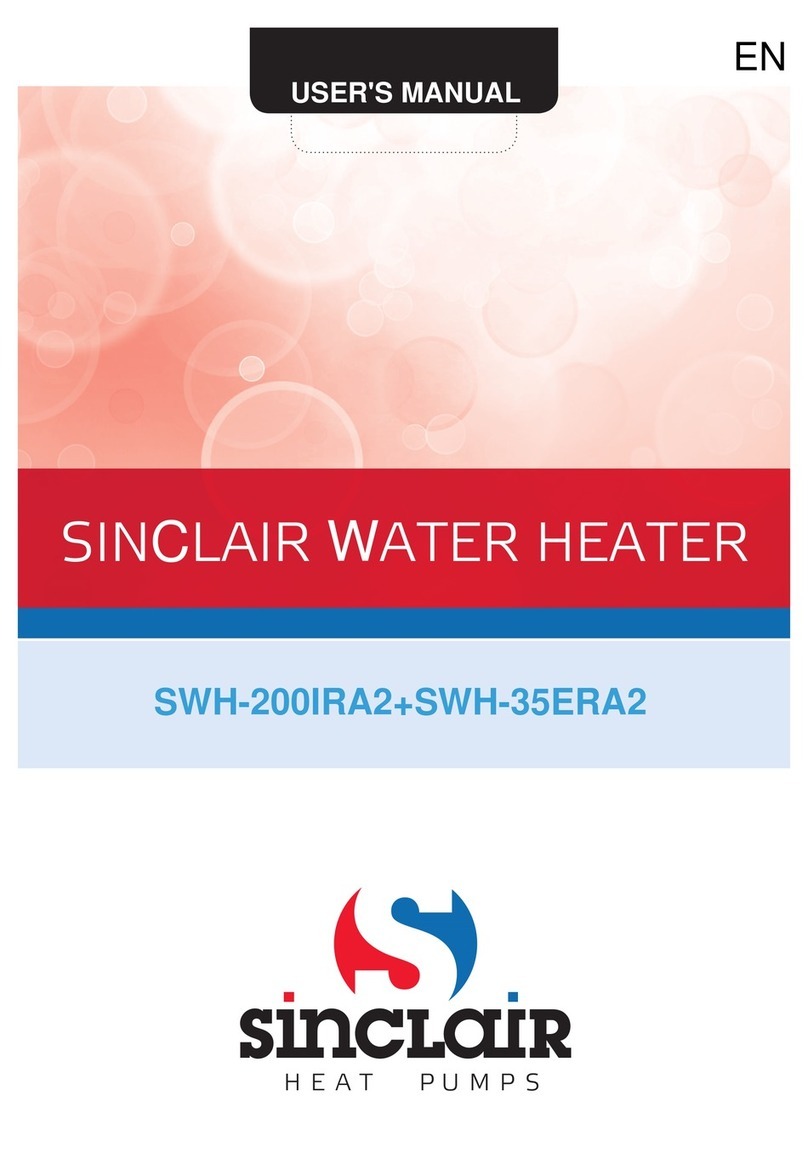
Sinclair
Sinclair SWH-35ERA2 user manual
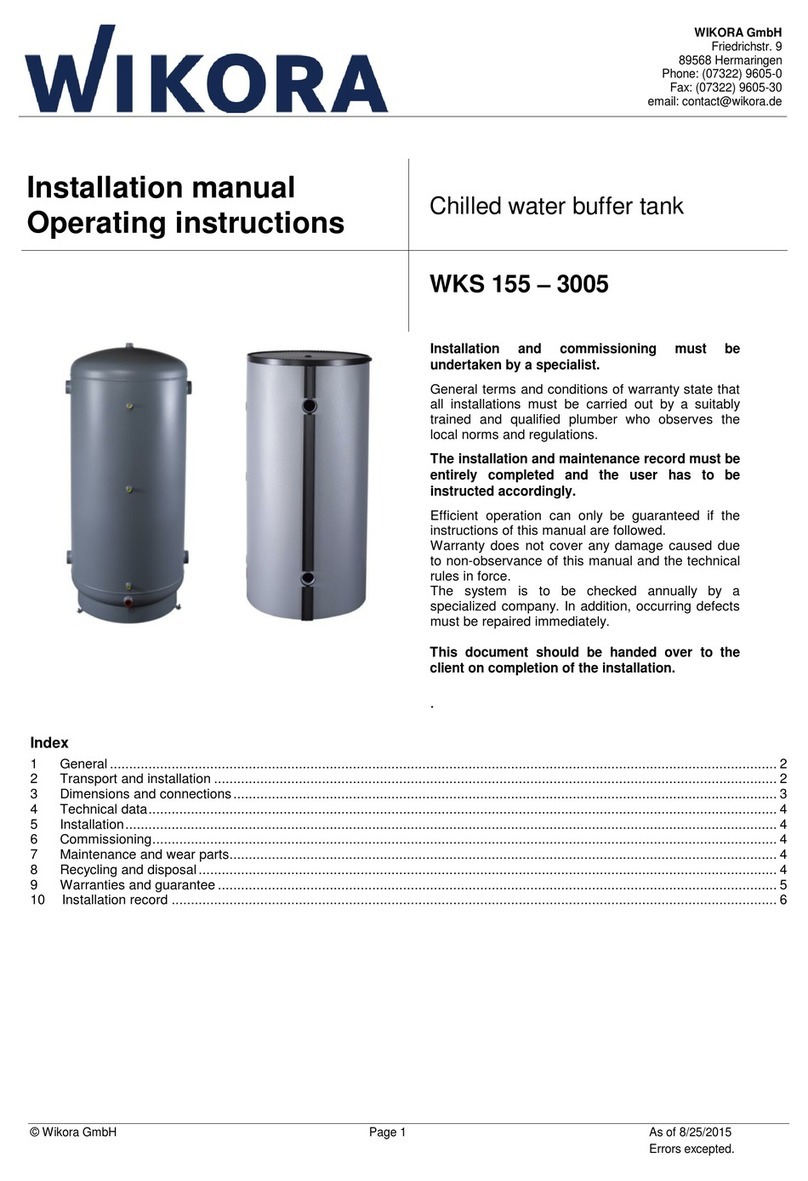
WIKORA
WIKORA WKS 155 Installation manual operating instructions
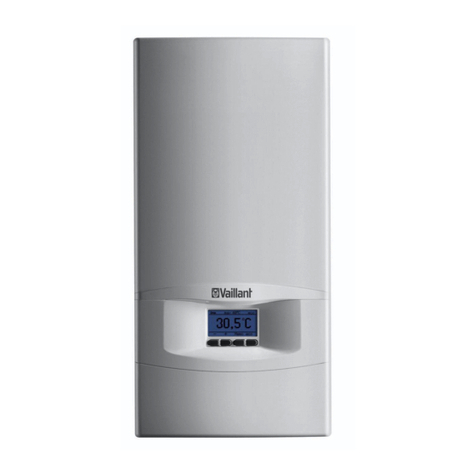
Vaillant
Vaillant VED E 18/7 E HK Instructions for use and installation
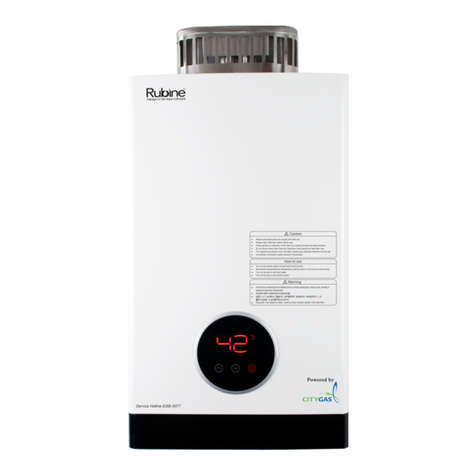
Rubine
Rubine BENE 10FE Owner's manual and installation guide
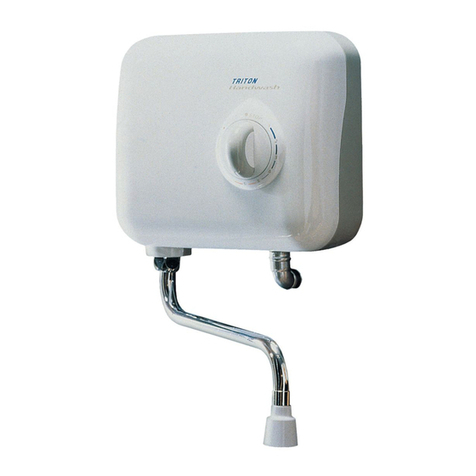
Triton
Triton T30i Installation and operating instructions
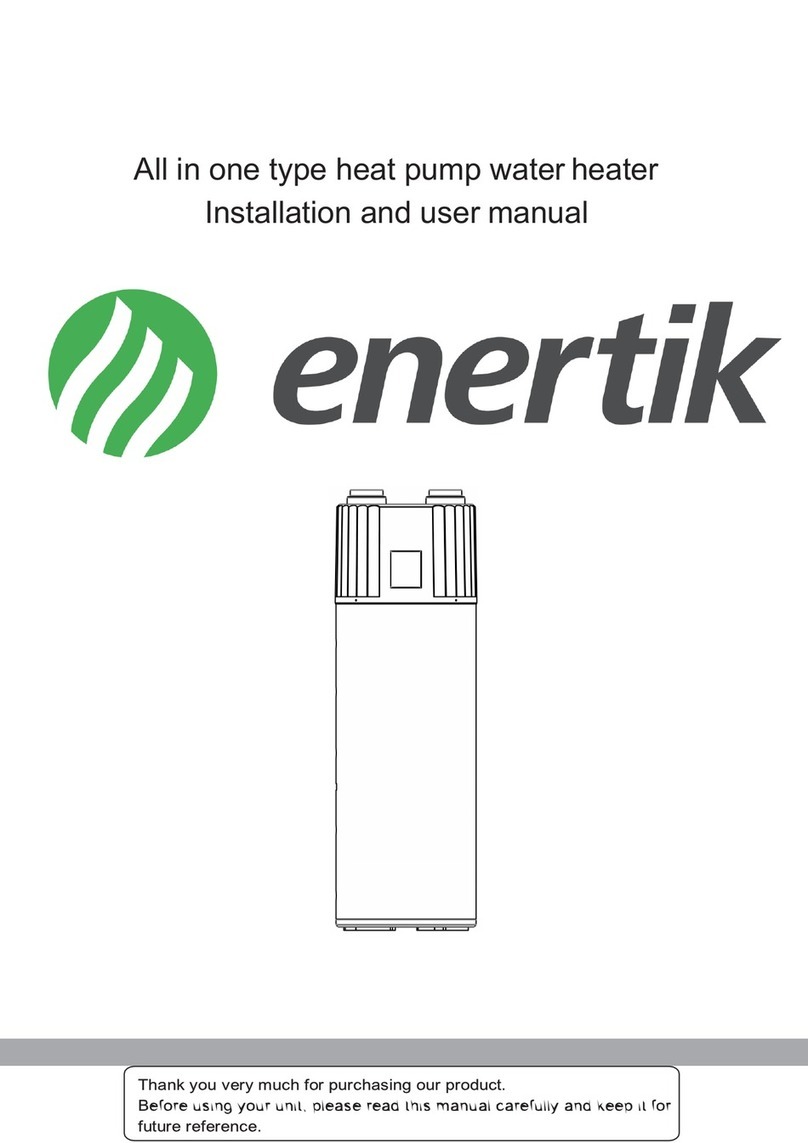
enertik
enertik BC-F20HWR2-200L Installation and user manual
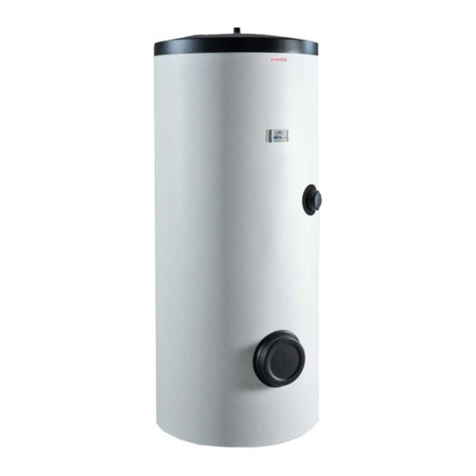
Drazice
Drazice OKC 300 NTR/1MPa Operating and installation instruction
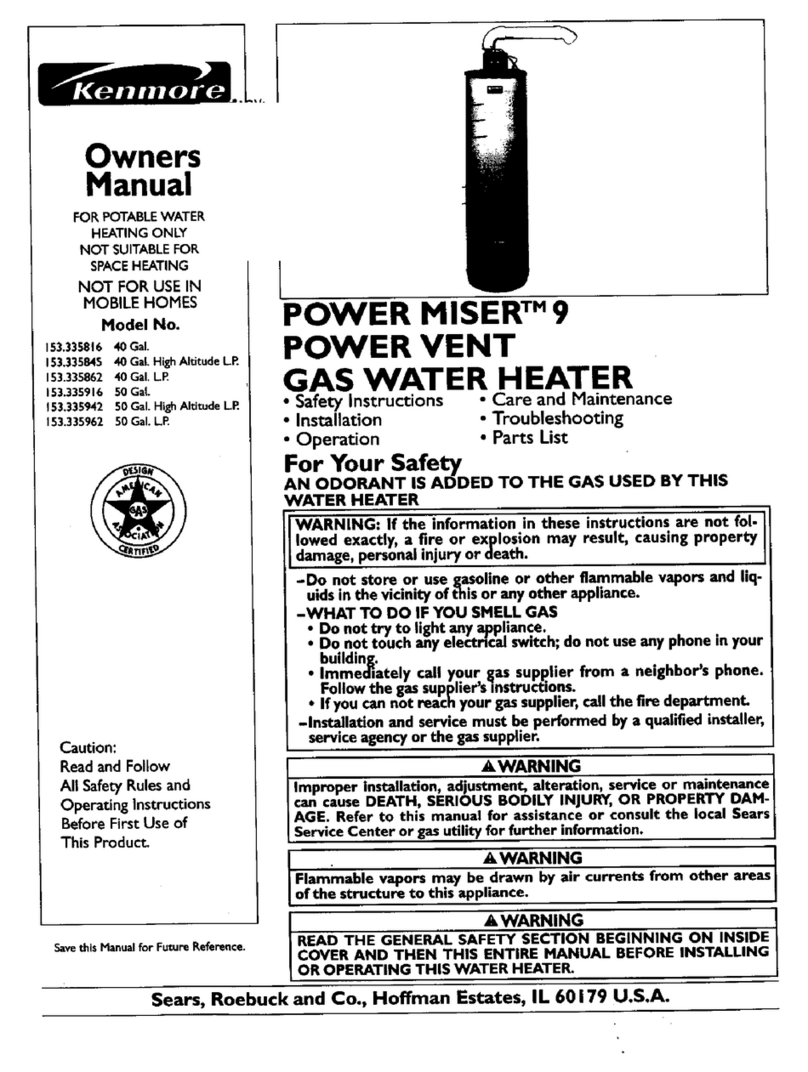
Kenmore
Kenmore POWER MISER 153.35862 owner's manual

Rinnai
Rinnai REU-VRM1120WD-E Infinity 11e Service manual

SICC Tech
SICC Tech CMAX Series user manual

Siemens
Siemens DE18401 Installation and operating instructions
